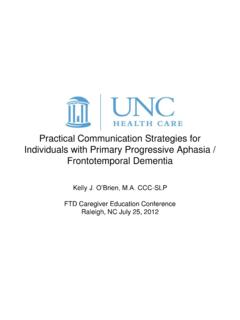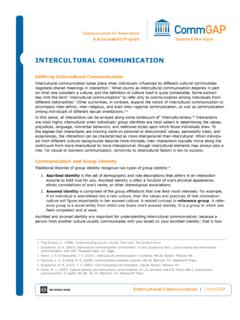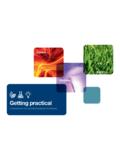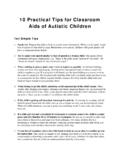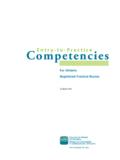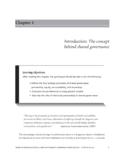Transcription of CAPPD: PRACTICAL INTERVENTIONS TO HELP …
1 1 CAPPD: PRACTICAL INTERVENTIONS TO help children AFFECTED BY TRAUMA 2010. All rights reserved. Health Federation of Philadelphia pending. All Rights Reserved. Health Federation of Philadelphia. 20102 Acknowledgements A Guide to PRACTICAL INTERVENTIONS for children Affected by Trauma would not have been possible without the exceptional contributions of Lucy Marcil. Lucy, spent tireless volunteer hours in the summer before enter-ing medical school at the University of Pennsylvania researching and writing this guide. She delved into books, scoured the internet, and met with local experts to find the best, most current and PRACTICAL informa-tion to include in the pages that follow. The Multiplying Connections Initiative is deeply grateful to her for the gift of her time and her work. Additional thanks go to the Multiplying Cross System Training Institute and Steering Committee who carefully reviewed and edited the content of the guide and to Suzanne Cohen for publishing the guide in a user friendly format.
2 3 A GUIDE TO PRACTICAL INTERVENTIONS TO help children AFFECTED BY TRAUMA Introduction The aim of Multiplying Connections is to promote positive development for all children , especially those who have been traumatized by repeated ex-posure to violence, abuse and neglect. To accomplish this aim, we offer training to children s services professionals on the impact of trauma on development; how to recognize children s reactions to trauma; and how to promote healing through trauma informed care. This guide is designed to supplement the information and skills learned in the Becoming Trauma In-formed course by providing you with specific: techniques (behavioral and structural changes you can make when interacting with children ), activities (focused interactions with children designed specifically to help them cope with their responses to trauma and any trauma triggers present in the environment), and environmental changes (ways you can rearrange your office, class-room, etc to make it calmer and more secure for children ) With a little practice, all of these strategies can easily be implemented and integrated into your daily work and they do not require any special clinical training.
3 Pending. All Rights Reserved. Health Federation of Philadelphia. 20104 Since childhood trauma is any physical or physiological threat or assault to a child s physical integrity, sense of self, safety or survival or to the physical safety of another person significant to the children (MC definition BTI), the overall goal of all of these INTERVENTIONS is to increase a child s sense of self, safety, stability, and positive connections with others. Perhaps the most important thing you can do for a child affected by trauma is to create a positive, nurturing relationship with him. Research has repeatedly shown that not only do secure relationships with adults help all children feel safe, stable and develop a sense of self, they also can help children who experience hyper-arousal or disassociation as result of exposure to trauma return to a calmer state.
4 Operating at a more normal level of arousal is crucial for proper brain development and for creating the optimal brain state for learning. The INTERVENTIONS in this guide are helpful for ALL children because they expose them to positive experiences that promote healthy brain develop-ment. children who experience trauma, however, need more deliberate and more frequent exposure to these INTERVENTIONS because their exposure to such positive experiences has often been limited and curtailed. Repeated positive experiences enable children affected by trauma to de-velop new neural path ways in their brains, increasing the opportunity for healthy development and growth. As clinician David Bath points out, chil-dren affected by trauma have stress response systems that have funda-mentally changed; they focus on the need to ensure safety rather than on the many growth-promoting interests and activities that secure children find attractive and stimulating (Bath, ).
5 For maximum effectiveness, these INTERVENTIONS , particularly the techniques and environmental changes, need to be done continually, on a permanent basis. Doing so takes practice and patience. It also takes advanced planning, but over time it will become intuitive. 5 In the video series Helping Traumatized children neuroscientist Bruce Perry, MD, outlines the five most important things adults can do to help children who are traumatized: Stay and teach CALM, be ATTUNED, PRESENT, and PREDICTABLE and DON T let children s emotions escalate your own. We have created the mnemonic CAPPD to help you remember these skills. All the activities, techniques, and environmental changes in this guide in-corporate one or more of the five principles of CAPPD: CALM: aims to keep both you and the child(ren) you work with in a re-laxed, focused state.
6 It is normal for children to react emotionally to things that upset or agitate them. Learning to regulate their emotions and return to a calm state after being alarmed or triggered by some-thing that upsets them fosters positive relationships and experiences by helping children function in the, the neocortex, the optimal part of the brain for complex thinking and learning. ATTUNED: asks you to be aware of children s non-verbal signals: body language, tone of voice, emotional state. These signals tell you how much and what types of activity and learning the child can currently handle. These signals are also constantly shifting, so being attuned to children requires constant vigilance. Furthermore, children affected by trauma experience both life and their trauma in the midbrain, or the implicit, sensory part of the brain rather than in the thinking/learning neocortex.
7 (Steele, p. 14). Consequently, you must connect with the child(ren) on an emotional, sensory level before moving to a cognitive level. pending. All Rights Reserved. Health Federation of Philadelphia. 20106 PRESENT: requires that you focus your attention on the child(ren) you are with, that you be in the moment. All children can sense when you are not truly engaged or focused on them; to compound this intuition, a pervasive mistrust of the adults with whom they interact (Bath, p. 6) is a key characteristic of children who have experienced trauma. De-spite their wariness, these children need to and, with support, can form secure relationships with loving adults. PREDICTABLE: asks that you provide children with routine, structured, and repeated positive experiences that they need to thrive. children who have experience trauma view the world as scary and unreliable.
8 Being predictable in your actions and routines will help children feel safe. When they feel safe, they can stop devoting a majority of their brain energy to the fight-or-flight response and instead be free to grow and explore. Engaging in age-appropriate growth-promoting activities will help their brains develop new, positive neuro-networks. DON T let children s Emotions Escalate Your Own: requires you to remain in control of your emotions and of your expression of them. When children lose control and become angry, frustrated, overly excited, or scared, our own emotions can spiral out of control as well. When this happens, we can escalate the situation and trigger further trauma re-sponses in children . However, these are the moments when children most need us to be calm and steady. They need to know that even though they have lost control, and are experiencing difficult and frightening feelings, the world can still be a reliable and safe place and that they can depend on trustworthy adults.
9 One of the main chal-lenges when working with children who have experienced trauma is teaching them to regulate their own emotions, since their brain sys-tems are often in a hypervigilant or disassociated state. The best way for children to learn to regulate their emotions is by watching us regu-late ours. 7 We hope you will find these INTERVENTIONS informative and useful. Please visit our website, , to let us know how you are using CAPPD in your work and if you have further questions or comments! TECHNIQUES CREATE EMOTIONAL/PHYSICAL SAFETY Age: 0-5 Applicable To: Groups or Individuals CAPPD Concepts: predictable, attuned, calm What It Is: children affected by trauma will often cling or want to stay close to their primary caregiver; or conversely can be indiscriminate about who they hug. It is important to provide appropriate physical touch to these children .
10 Sit close together, hug them, rub their backs, etc, but ONLY provide physical affection when the child seeks it; requesting/giving un-asked for affection can re-traumatize the child or trigger trauma-related behaviors. Why It Helps: Physical comfort can help calm children and help them cope with the trauma. When children feel free from fear and physical harm, they can better regulate their emotions and behavior. PROVIDE CHOICE AND CONTROL Age: Applicable To: Groups or Individuals CAPPD Concepts: predictable, attuned, present What It Is: It is normal and necessary for children to go through a demand-ing/controlling phase of development, but trauma exacerbates it. For chil- pending. All Rights Reserved. Health Federation of Philadelphia. 20108 dren who have been traumatized, many of their life experiences involve control being taken away from them; they need to regain a sense of con-trol.
